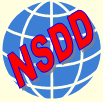
IAEA Project on Improvement of Analysis and Checking Codes for NSDD Evaluations
Technical Meeting on Improving Analysis Codes for NSDD Evaluations, 3-7 December 2018, IAEA
The third meeting in the series of IAEA meetings dealing with ENSDF analysis and checking codes was held from 3 to 7 December 2018, at the IAEA Headquarters in Vienna.
Participants reviewed the status of the analysis and checking codes as well as the new editors since the previous meeting in 2015, discussed new codes that have emerged since then, and recommended actions to finalize and validate the codes before the upcoming NSDD meeting in 2019. Additional needs, such as an ENSDF editor and updating of the ENSDF Manual were also discussed.
Details on the discussions and recommendations are included in the summary report of the meeting which is in preparation.
The meeting was chaired by A. Sonzogni (BNL) and the minutes were kept by T. Kibedi (ANU).
Presentations
JAVA-NDS code: UPDATE
As discussed at the NSDD 2015 meeting in March 2015 and then in detail at the IAEA ENSDF Codes meeting in October 2015 and the USNDP meeting in November 2015, a beta version of the McMaster-MSU JAVA-NDS program has been prepared for testing by the NSDD evaluators. This beta version is based on the original 2011 version of McMaster JAVA-NDS presented at the NSDD-2009 and NSDD-2011 meetings by Balraj Singh, followed by major modifications and improvements made since April 2015 by Dr. Jun Chen at NSCL-MSU. Through simple steps with a graphic user interface, one can produce a publish-ready NDS-style PDF output from an ENSDF-format input file. Use of this code for NDS publications as well as for web display on NNDC webpage for the ENSDF database is currently under consideration.
The beta version of the code was circulated among NSDD evaluaotrs on 30 November 2015 for comments and feedback. A working group was formed at USNDP 2015 to work on the improvement and finalization of the beta version. This working group collected all feedback and met at TUNL, from 9 to 11 May 2016. The minutes of thsi meeting can be found here.
The overall conclusion was that the JAVA-NDS code will be adopted for publications in NDS after it has incorporated all of the suggestions from the meeting.
New RadD Code
This new code RadD deduces the radius parameter (r0) for odd-odd and odd-A nuclei using the even-even radii of Y.A. Akovali [Nuclear Data Sheets, 84 (1998) 1], as input parameters. These radii can be used in the calculation of alpha hindrance factors.
The development of this code was assigned to Sukhjeet Singh (Maharishi Markandeshwar University, India) and Balraj Singh (McMaster Univ., Canada) at the 1st Technical Meeting on Improvement of Analysis Codes for NSDD evaluations (for details see report INDC(NDS)-0665). The software package including a manual and auxiliary files is available on the IAEA ENSDF Codes web page. For future correspondence with regards to this code please contact Sukhjeet Singh or Balraj Singh.
New Python software for ENSDF Evaluations
One of the assignments of the TM on Improvement of Analysis Codes for NSDD evaluations that was held at the IAEA from 10-13 June 2014 was to make available the xls2ens software developed by the Argonne group. The software was sent by F. Kondev with the following information:
The xls2ens software creates an ensdf-format file from tabulated data in an Excel spreadsheet. It is written in Python and includes a manual (README.pdf), as well as a test input file. The python code can be run on Windows, Linux and Mac OS, and the only package the user needs to install is xlrd that is available free.
The software is now available on the IAEA ENSDF Codes web page under the Utility tab. For future correspondence with regards to this code please contact Jun Chen.
Project on Improvement of Codes used for NSDD Evaluations: Introduction to the project
The ENSDF Analysis and Utility codes are essential tools for evaluators' work and for that reason it is important that they are maintained, i.e. that they are continuously checked for bugs, kept up-to-date with developments in physics models, statistical methods and error analysis, and evaluation methods/policies in general. To make sure 'maintenance' of these codes is kept up by future generations of programmers and evaluators, these codes need to be reviewed and most likely re-written using modern programming tools.
The Nuclear Data Section has began a Data Development Project to address all the problems that are encountered in the utilization of the existing ENSDF codes in view of the overall need to re-structure and/or re-write them using modern programming tools. The kick-off Technical Meeting was held at IAEA headquarters in Vienna, from 10 to 13 June 2014. The output of this meeting was a priority list of codes that need to be improved and a list of assignments/tasks to be delivered within a given period. A summary report of the meeting is available INDC(NDS)-0665. Presentations given at the meeting are available here.
A follow-up meeting to monitor progress and revise the assignments as deemed necessary was held from 5 to 8 October 2015, at the IAEA, in Vienna. The summary report of the meeting is available INDC(NDS)-0696. The presentations given at this meeting can be found here.
NSDD evaluators' contribution to this project is valuable. This effort can only succeed if it draws on the experience of the NSDD evaluators themselves. Libby McCutchan, Ninel Nica, Alexandru Negret, Junde Huo, and Suhkjeet Singh are gratefully acknowledged for sending their feedback on the codes.
This webpage will be continuosly updated with news and information about the IAEA codes development project and the codes under development or in release stage.